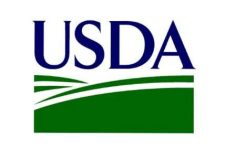As reported in High Plains Journal Farmers have always been among the most important supporters of the United States inland waterway system. The ability to use water transportation to export their crops can mean the difference between profit and loss for many growers. Contributions from growers helped jump-start studies on the deepening of the Lower Mississippi River.
In February, the U.S. Department of Agriculture released a new report with up-to-date facts and figures showing the importance of the waterways to agriculture. Titled “A Reliable Waterway System Is Important to Agriculture,” it is a product of USDA’s Agricultural Marketing Service. When the AMS is marketing and promoting U.S. ag products, a reliable waterways transportation system is always a key factor.
Among the updated data:
• U.S. agriculture is expected to contribute $10.5 billion to the U.S. balance of trade in fiscal year 2022.
• In 2019, every $1 billion of U.S. agricultural exports required approximately 7,784 full-time civilian jobs throughout the economy. U.S. agricultural exports in 2019 required a total of 1,102,000 such jobs.
• Based on the October 2021 estimates for marketing year 2021-22, the U.S. is projected to export 22% of the grain it produced. This will include 53% of wheat, 48% of rice, 44% of soybeans, and 18% of corn.
• The Mississippi River, Texas Gulf and East Gulf ports accounted for 57% of grains inspected or weighed for export in calendar year 2020, nearly 81.2 million metric tons.
• Pacific Northwest ports accounted for 28% of grains inspected or weighed for export in 2020, nearly 39 million metric tons.
• USDA estimates an area of 85.1 million corn acres harvested in October 2021 yielded (in marketing year 2021-22) 176.5 bushels per acre—amounting to 5.2 billion bushels, or 35% of the total corn supply. This crop will be converted to ethanol and byproducts including distillers’ grains, corn gluten feed, corn gluten meal, and corn oil.
• In 2019, U.S. waterways carried more than 41.9 million tons (38 million metric tons) of fertilizer movements. Of this total, 16.8 million tons (15.2 million metric tons) moved by barge through the inland waterways.
• In 2020, the U.S. waterways carried 305.2 million tons (276.9 million metric tons) of food and farm products, including 200.8 million tons (182.2 million metric tons) of grain and oilseeds.
• In 2020, a total of 37,611 grain barges were unloaded in the New Orleans port region, showing that an additional 12,227 grain barges entered the river below these locks
Studies have shown that, without barge competition, agricultural shippers pay higher rail transportation costs, the farther they are from an inland waterway. Commodity crop prices track differently in areas with access to water export.
For more information, view the full report at usda.gov.



